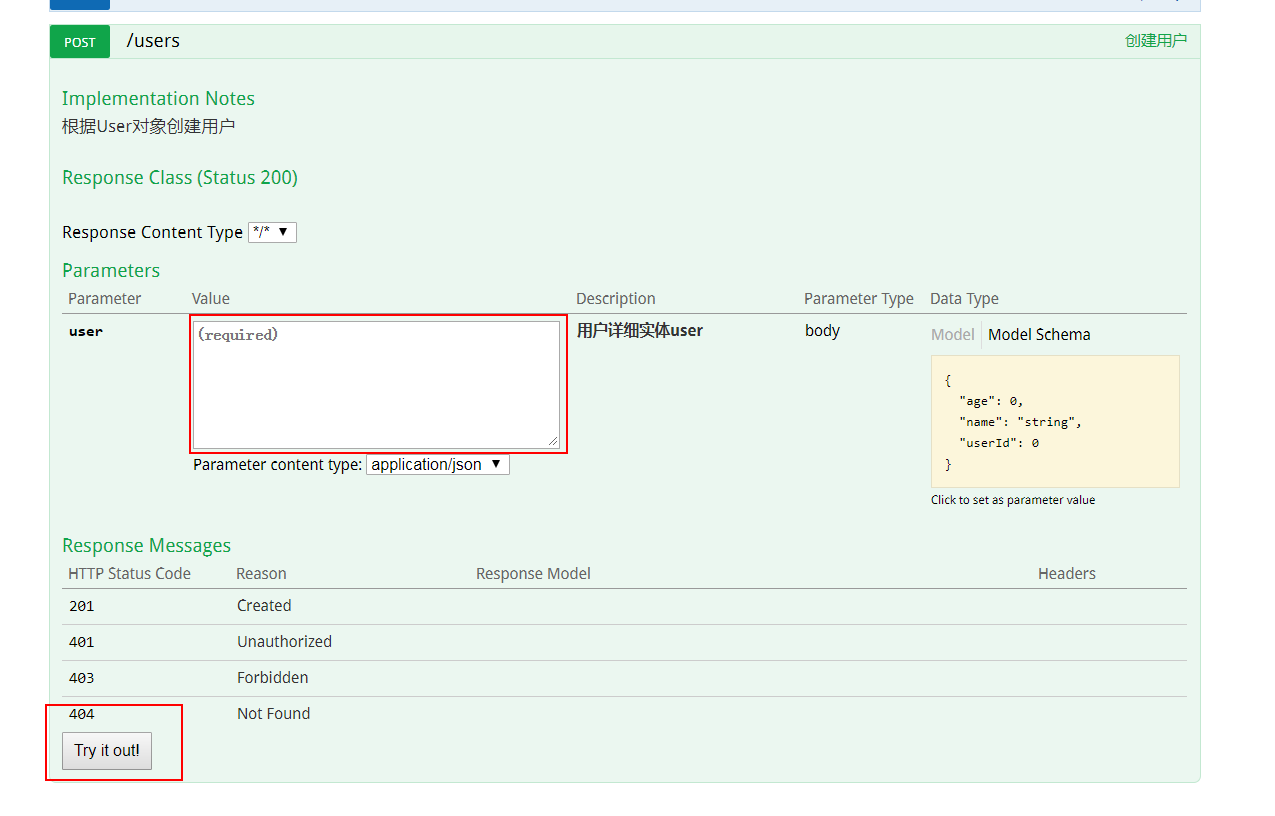源码地址:https://gitee.com/yaohuiqin/SpringBootDemo
概念:
构建RESTful API的目的通常是由于多终端的原因,这些终端会共用很多底层业务逻辑,因此会抽象出来一层同时服务于多个移动端或Web前端。
SpringBoot 整合Swagger2,并配合Spring MVC组织处强大的Restful Api 文档。
步骤:
1、pom.xml新增依赖包:
<dependency> <groupId>io.springfox</groupId> <artifactId>springfox-swagger2</artifactId> <version>2.2.2</version> </dependency> <dependency> <groupId>io.springfox</groupId> <artifactId>springfox-swagger-ui</artifactId> <version>2.2.2</version> </dependency>
2、创建配置类swagger2:
@Configuration
@EnableSwagger2
public class Swagger2 {
@Bean
public Docket createRestApi() {
return new Docket(DocumentationType.SWAGGER_2)
.apiInfo(apiInfo())
.select()
.apis(RequestHandlerSelectors.basePackage("per.yhq.controller.Swagger2"))
.paths(PathSelectors.any())
.build();
}
private ApiInfo apiInfo() {
return new ApiInfoBuilder()
.title("Swagger首页的标题")
.description("Swagger首页的标题下的描述")
.termsOfServiceUrl("https://www.cnblogs.com/yaohuiqin/p/9367822.html")
.contact("yaohuiqin")
.version("1.0")
.build();
}
分析: @Configuration (Spring将这个类解析成配置类)
@EnableSwagger2(启用Swagger)
5、添加controller类,以及entity实体类:
@RestController
@RequestMapping(value = "/users")
public class SwaggerUserController {
static Map<Long,User> users = Collections.synchronizedMap(new HashMap<Long, User>());
public SwaggerUserController(){
users.put(123L,new User(1307L,"yhq",25));
}
@ApiOperation(value="获取用户列表", notes="获取全部的用户信息")
@RequestMapping(value = {""} ,method = RequestMethod.GET)
public List<User> getUserList(){
List<User> userlist = new ArrayList<User>(users.values());
return userlist;
}
@ApiOperation(value="创建用户", notes="根据User对象创建用户")
@ApiImplicitParam(name = "user", value = "用户详细实体user", required = true, dataType = "User")
@RequestMapping(value="", method=RequestMethod.POST)
public String postUser(@RequestBody User user) {
users.put(user.getUserId(), user);
return "success";
}
@ApiOperation(value="获取用户详细信息", notes="根据url的id来获取用户详细信息")
@ApiImplicitParam(name = "id", value = "用户ID", required = true, dataType = "Long", paramType = "path")
@RequestMapping(value="/{id}", method=RequestMethod.GET)
public User getUser(@PathVariable Long id) {
return users.get(id);
}
@ApiOperation(value="更新用户详细信息", notes="根据url的id来指定更新对象,并根据传过来的user信息来更新用户详细信息")
@ApiImplicitParams({
@ApiImplicitParam(name = "id", value = "用户ID", required = true, dataType = "Long", paramType = "path"),
@ApiImplicitParam(name = "user", value = "用户详细实体user", required = true, dataType = "User")
})
@RequestMapping(value="/{id}", method=RequestMethod.PUT)
public String putUser(@PathVariable Long id, @RequestBody User user) {
User u = users.get(id);
u.setName(user.getName());
u.setAge(user.getAge());
users.put(id, u);
return "success";
}
@ApiOperation(value="删除用户", notes="根据url的id来指定删除对象")
@ApiImplicitParam(name = "id", value = "用户ID", required = true, dataType = "Long", paramType = "path")
@RequestMapping(value="/{id}", method=RequestMethod.DELETE)
public String deleteUser(@PathVariable Long id) {
users.remove(id);
return "success";
}
}
public class User {
private Long userId;
private String name;
private int age;
//.....get set 方法,构造器等
}
4、运行项目,在浏览器上访问:http://localhost:8080/swagger-ui.html


输入参数,点击Try it out,可以进行测试。